In today’s fast-paced digital world, mobile apps are everywhere, and users expect them to work flawlessly across countless devices no matter the device, operating system, or network condition. And if your app fails? They’ll uninstall it faster than you can say "bug fixed". So, you're building a mobile app. The design is slick, the code is coming together beautifully, and you can already see it shooting to the top of the charts. But then a sobering thought hits: "How on earth are we going to test this thing?"
If you've ever tried to manually test an app across a dozen different devices, operating systems, and screen sizes, you know it's a special kind of nightmare. It's slow, incredibly repetitive, and let's be honest, it's mind-numbingly boring. Furthermore, with the pace of development today, manual testing just doesn't scale.
That's where mobile testing tools come in. They automate the grunt work, help you catch bugs before your users do, and are absolutely essential for any serious development team. Whether you’re a developer, tester, or product manager, choosing the right mobile testing tools can make a huge difference in app quality and user satisfaction. But here's the catch: the landscape of tools is massive and confusing. But with so many options out there, how do you choose the right one?
Well, that's why I'm here. We're going to walk through the top 10 mobile testing tools that can take your app from buggy to brilliant. And speaking of brilliance, while many tools focus on the UI, don't forget the engine underneath: your APIs. Using a tool like Apidog to design, mock, test, debug and document your APIs ensures that the core functionality of your app is rock-solid before you even start UI testing.
Alright, let's dive into the tools that will save your sanity and supercharge your app's quality.
Navigating the Mobile Testing Jungle: Types of Tools
Before we list the tools, it's crucial to understand the different categories they fall into. You'll likely need a combination of these for a complete strategy.
- Native Testing Tools: Provided by Google and Apple themselves. They're built specifically for Android and iOS and offer deep integration with the platforms (e.g., Espresso, XCUITest).
- Cross-Platform Tools: These allow you to write a single test that can run on both Android and iOS. This is a huge efficiency win (e.g., Appium, Detox).
- Cloud-Based Device Labs: You can't own every device. These services provide access to thousands of real phones and tablets in the cloud, so you can test your app on a Samsung Galaxy S23 Ultra or an iPhone 14 Pro without buying one (e.g., BrowserStack, Sauce Labs).
- API Testing Tools: Mobile apps are front-ends for APIs. Testing the API layer directly is faster and more stable than UI testing. This is where tools like Apidog excel.
- Performance Testing Tools: Specialized tools for measuring app startup time, memory usage, battery consumption, and network performance.
Why Mobile Testing Tools Matter
Before diving into the tools, let’s chat about why mobile testing tools are super important. Mobile users run apps on different devices, operating systems, screen sizes, and network conditions. Ensuring your app works smoothly everywhere means testing on real devices, automating repetitive tests, and catching bugs early. According to surveys, 70% of users abandon an app if it takes too long to load or crashes frequently.
Thanks to AI and cloud technology, modern mobile testing tools help you:
- Automate tests to save time
- Test on real devices remotely
- Detect bugs before users do
- Monitor performance under different conditions
- Integrate with developer pipelines for continuous testing
And if you’re working with APIs which power much of the app’s functionality using an API testing tool like Apidog can help you test, debug, and manage your APIs with ease. You can download Apidog for free today and see how it wraps your API workflows neatly while working alongside your mobile testing efforts.
Criteria for Choosing the Right Mobile Testing Tool
Not all mobile testing tools are created equal. When choosing one, consider:
- Platform support → Does it support iOS, Android, or both?
- Testing types → UI, functional, performance, security, etc.
- Ease of use → Is the learning curve steep?
- Integration → Can it fit into your CI/CD pipeline?
- Cost → Does it match your budget?
Top 10 Mobile Testing Tools
1. Apidog: The API-First Foundation
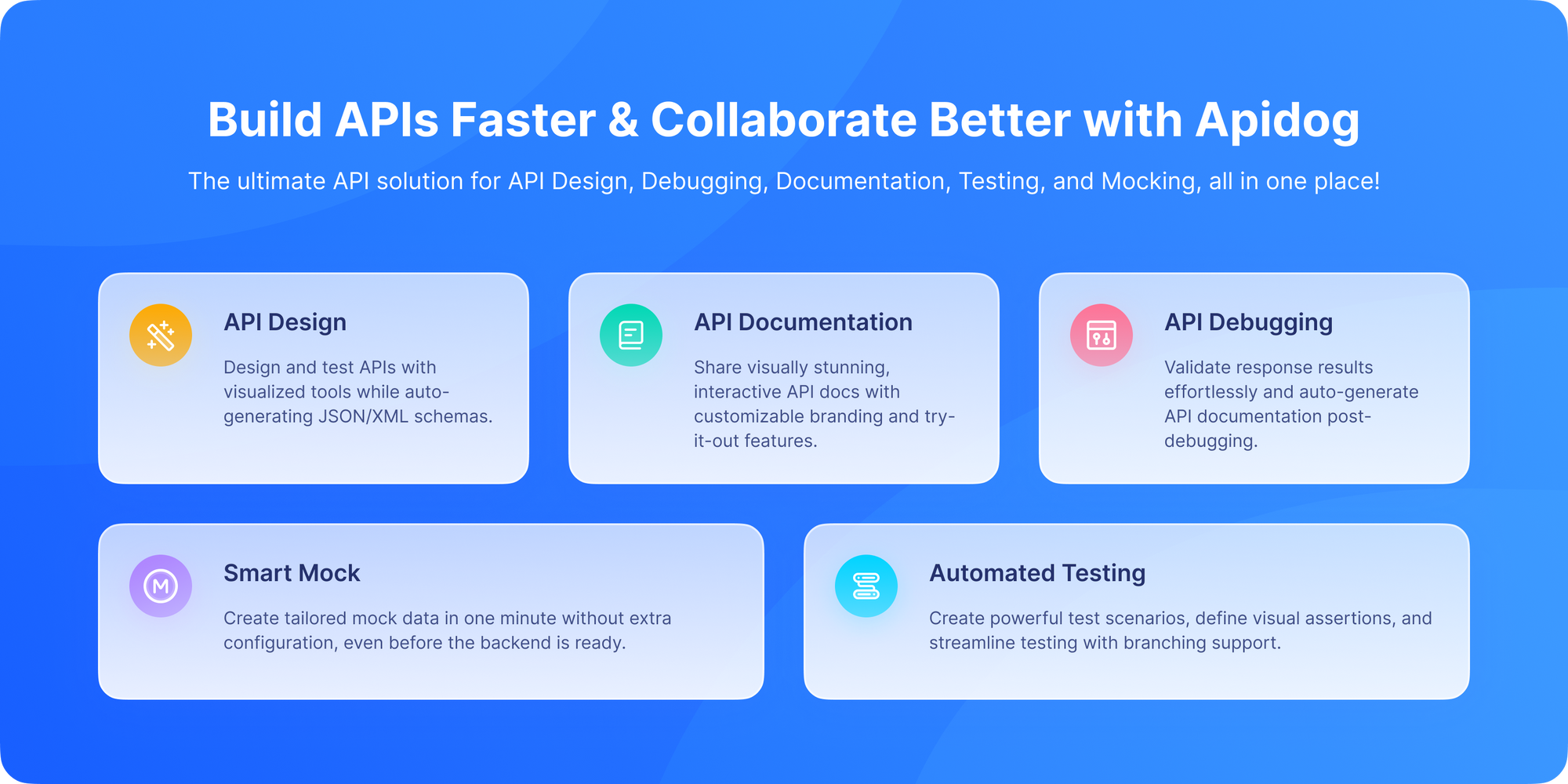
Best for: Ensuring the backend your mobile app relies on is robust, reliable, and well-tested.
Wait, an API tool on a mobile testing list? Absolutely! Modern mobile apps are often just a UI layer on top of a complex network of APIs. Whether it’s fetching data, processing payments, or logging users in, APIs are the backbone of mobile apps. If the API fails, the app fails. Testing your APIs directly is faster, more stable, and often more effective than only testing through the UI.
How it works: Apidog is an all-in-one platform for API design, debugging, testing, and mocking. You can define your API specifications, create comprehensive test scenarios, and run them as part of your CI/CD pipeline.
Why it's crucial for mobile:
- Shift-Left Testing: Find API bugs before they reach the mobile team. Developers can use Apidog's mock servers to build and test the UI against a fake, working API even before the real backend is ready.
- Stability: API tests are not flaky like UI tests. They don't break because of a UI redesign.
- Performance: You can load test your APIs to ensure they can handle traffic from thousands of mobile clients.
- Integration: You can run Apidog tests automatically whenever the API code changes, ensuring backwards compatibility for your mobile apps.
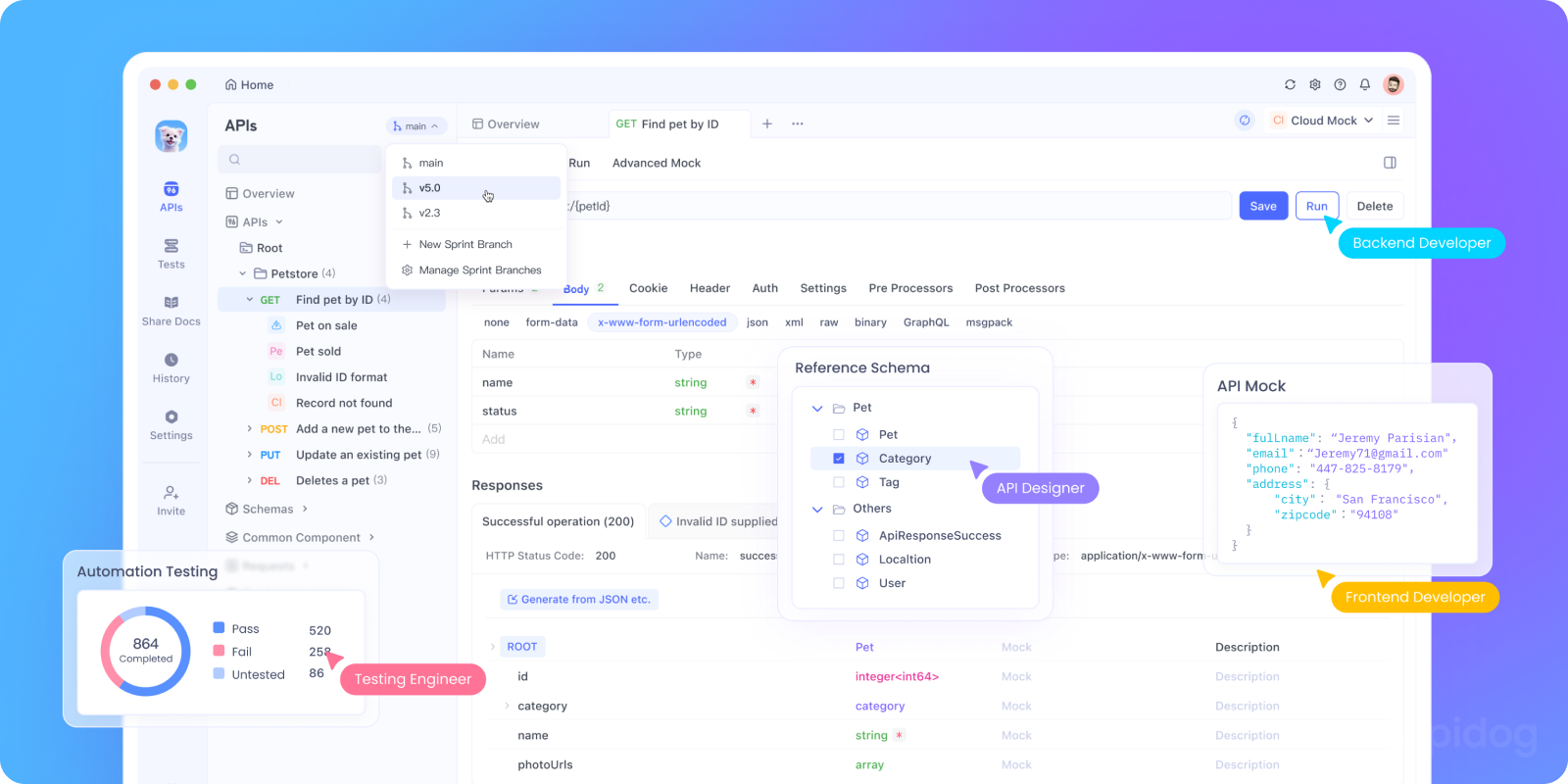
Why testers love it:
- Unified platform for designing, mocking, and testing APIs.
- Automates API testing within your CI/CD pipelines.
- Ensures your mobile app backend stays reliable.
- Free to get started.
Verdict: Don't just test the UI. Use Apidog to build a solid API foundation, making your mobile testing faster and more reliable.
2. Appium: The Open-Source Champion

Best for: Cross-platform automated testing on real devices and simulators.
If there's one tool that's become the de facto standard for mobile automation, it's Appium. Its biggest strength is its philosophy: "Write your tests once, and run them on both Android and iOS." It's a huge time-saver.
How it works: Appium is a server that follows the WebDriver protocol (the same standard behind Selenium for web browsers). This means you can write your tests in pretty much any programming language you like Java, Python, JavaScript, Ruby, PHP, C# you name it.
Key Features:
- True Cross-Platform: One codebase for Android and iOS.
- Language Agnostic: Use your team's preferred language.
- No App Modification Needed: It tests your app as-is; you don't need to recompile it with a special SDK.
- Massive Community: Huge support, plenty of plugins, and a wealth of tutorials online.
Considerations: Because it's so flexible, it can be slower than native tools and requires more setup. Locating elements can sometimes be tricky.
Verdict: The perfect starting point for most teams due to its flexibility and power.
3. XCUITest: iOS's Native Answer

Best for: iOS developers building robust UI tests within the Apple ecosystem.
XCUITest is Apple's equivalent to Espresso. It's the native UI testing framework built right into Xcode, making it the natural choice for iOS and macOS developers.
How it works: You write tests in Swift or Objective-C, and Xcode provides tools to record interactions with your app, generating the code for you. Like Espresso, it's designed to be tightly integrated and efficient.
Key Features:
- Seamless Xcode Integration: Built-in and supported by Apple.
- Recording Feature: Great for beginners to generate test code.
- Performance: Fast and reliable as it's built for the platform.
- Swift/Objective-C: Uses the languages your iOS team already knows.
Considerations: Apple-only. Learning curve if your team isn't familiar with Apple's development environment.
Verdict: The go-to framework for any team serious about automated iOS testing.
4. Detox: The Gray-Box End-to-End Champion
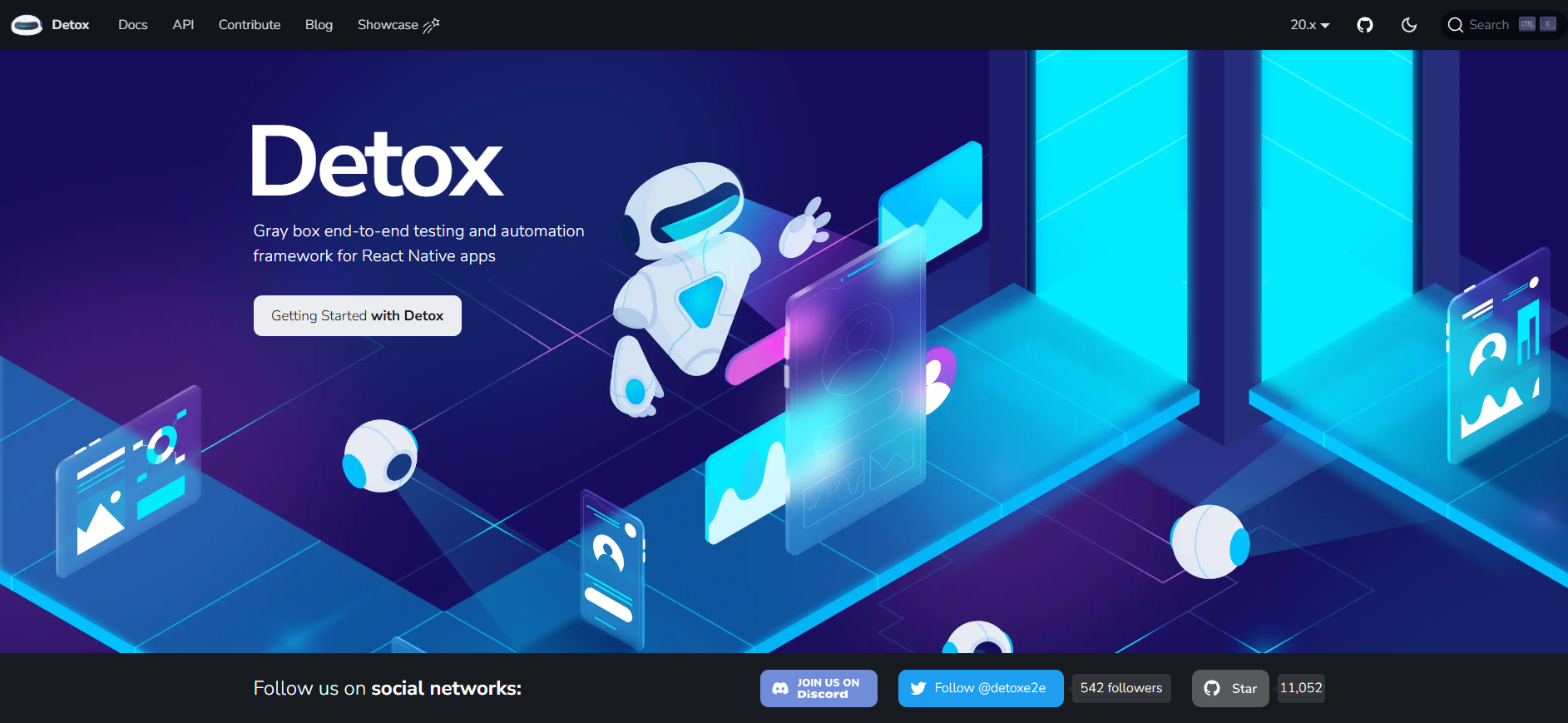
Best for: React Native apps or teams wanting super-fast, stable end-to-end tests.
Detox takes a different approach. While Appium is "black-box" (interacting with the app from the outside), Detox is "gray-box." It has direct access to the app's internal state, which allows it to solve the biggest pain point of mobile testing: flakiness due to timing.
How it works: Designed initially for React Native (though it now supports native iOS and Android), Detox runs on the same JavaScript thread as your app. This allows it to synchronize perfectly, waiting for animations, network requests, and timers to complete before moving on. The result is incredibly stable tests.
Key Features:
- Built for Stability: Its synchronization model eliminates flakiness.
- Great for React Native: First-class support for the popular framework.
- Fast Execution: Tests run quickly due to deep integration.
Considerations: Primarily JavaScript/React Native focused. Setup can be more complex than Appium.
Verdict: If you're building with React Native or value rock-solid test stability above all else, Detox is a top contender.
5. BrowserStack (and Sauce Labs): The Cloud Device Lab Giants
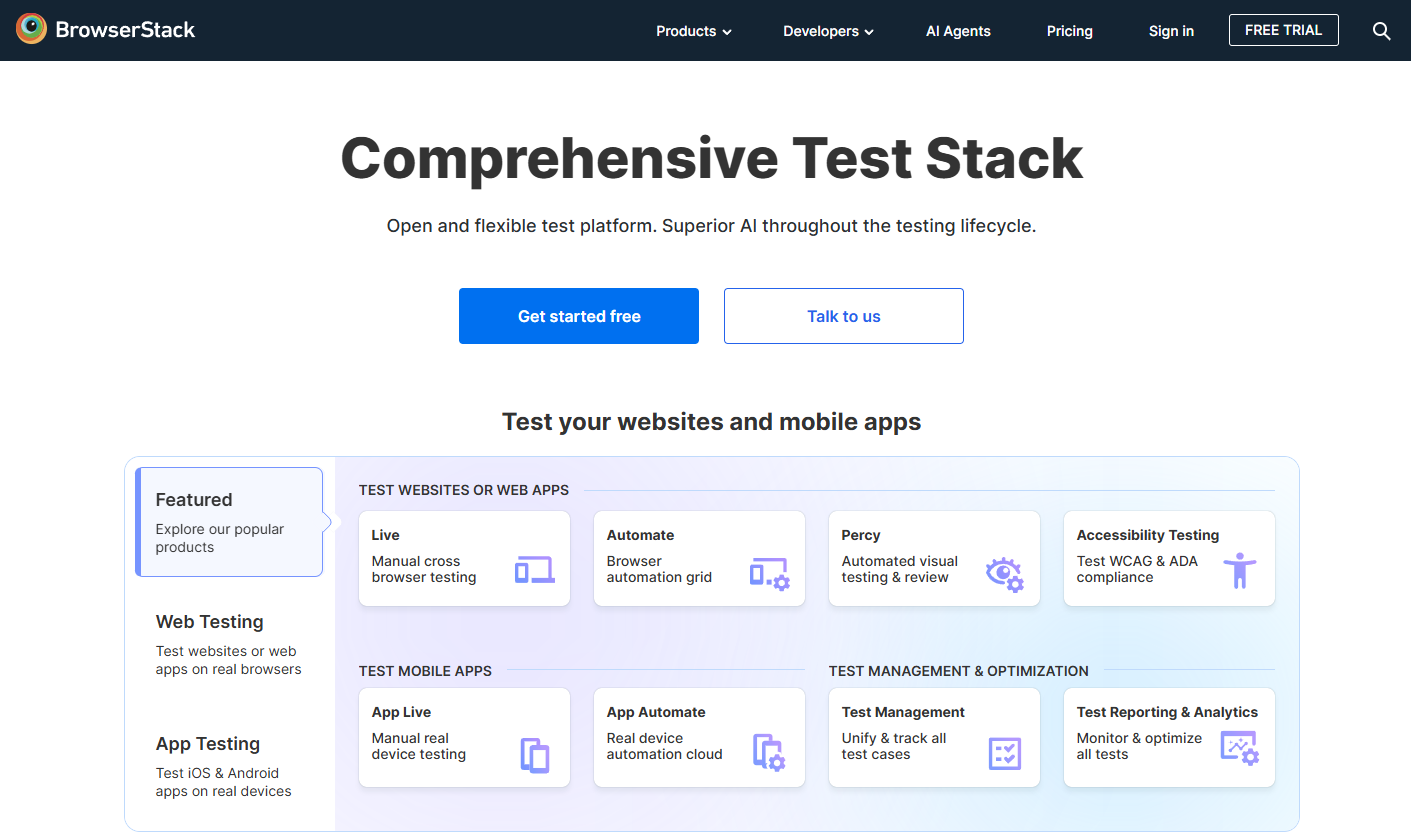
Best for: Testing on a massive array of real devices without the cost and hassle of maintaining them.
You can't test on a device you don't own. BrowserStack and its main competitor, Sauce Labs, solve this problem by providing instant access to thousands of real iOS and Android devices in the cloud.
How it works: You upload your app to their platform, select a device and OS version (e.g., iPhone 15 Pro on iOS 17.2), and you get a live interactive session. You can manually explore the app or run your automated Appium/Espresso/XCUITest tests on their device cloud.
Key Features:
- Massive Device Coverage: Test on the latest and oldest devices.
- Real Devices: More accurate than simulators/emulators for certain issues.
- Integrates with Everything: Works with your CI/CD pipeline (Jenkins, GitHub Actions, etc.) for automated testing on real devices.
- Live Testing: Manually test your app from your browser.
Considerations: It's a paid service (with free trials), so there's a cost associated with it.
Verdict: An essential service for any team that needs to ensure broad device compatibility. Non-negotiable for serious apps.
6. Espresso: Android's Native Powerhouse
Best for: Android developers who want fast, reliable UI tests.
If you're an Android purist, Espresso is Google's gift to you. It's a native testing framework deeply integrated into the Android ecosystem, specifically designed for writing concise and reliable UI tests. It’s tightly integrated with Android Studio, making it developer-friendly.
How it works: You write tests in Java or Kotlin, and Espresso synchronizes them with your app's UI thread. This means it automatically waits for the UI to be idle before performing an action, eliminating the need for messy sleep() statements and making tests incredibly fast and stable.
Key Features:
- Automatic Synchronization: No more flaky tests due to timing issues.
- Blazing Fast: Tests run as quickly as the UI can respond.
- Tight Android Studio Integration: Smooth workflow for Android devs.
- Concise API: The code is very readable and focused.
Why Use It?
- Fast execution of UI tests.
- Provides reliable synchronization with the app’s UI thread.
- Ideal for white-box testing.
Considerations: It's for Android only. You'll need a separate solution for iOS.
Verdict: The best choice for high-quality, reliable automated UI testing on Android.
7. Maestro (formerly MobileUI): The Rising Star
Best for: Teams wanting a simple, flakiness-free tool with a low learning curve.
Maestro is the new kid on the block that has taken the mobile testing world by storm. It's built on the premise that existing tools are too complex and tests are too flaky. Its goal is to be the simplest and most reliable testing framework available.
How it works: You write tests in a simple, human-readable YAML format. No need to write complex code. You just describe the user flow you want to test. Maestro handles the rest, with built-in smart waiting and resilience to flakiness.
Key Features:
- Easy to Learn: YAML syntax is much easier for QA engineers and developers alike.
- Flakiness-Resistant: Designed from the ground up to be stable.
- Cross-Platform: Supports both Android and iOS.
- Fast Growing: Gaining rapid adoption and community support.
Considerations: It's newer, so it has a smaller community and fewer integrations than Appium.
Verdict: A fantastic modern alternative to Appium, especially for teams wanting to get started quickly without a heavy coding requirement.
8. Firebase Test Lab: Google's Cloud-Based Testing
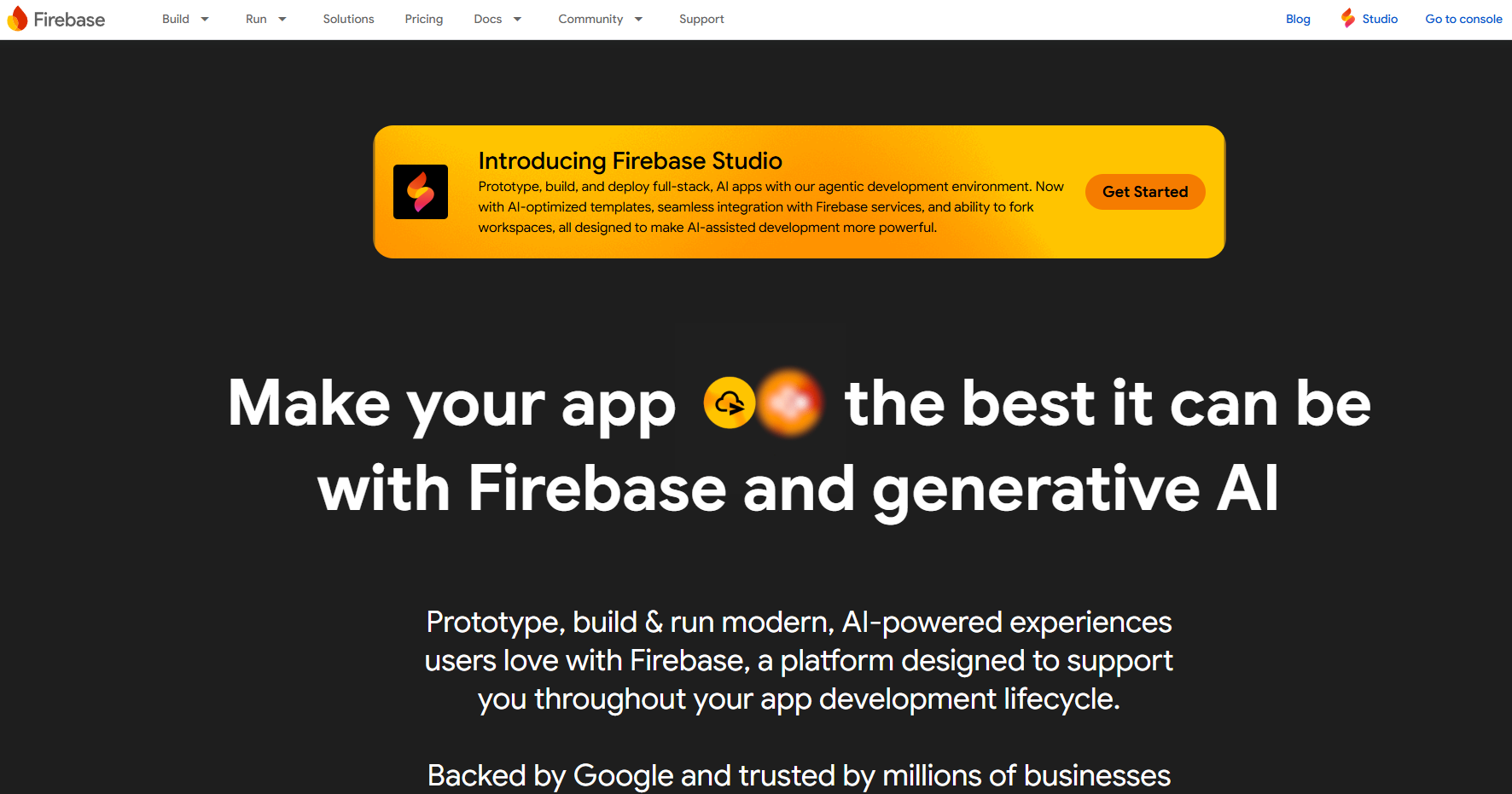
Best for: Android developers already in the Google ecosystem who need to test on a variety of devices.
Firebase Test Lab is a cloud-based app-testing infrastructure provided by Google. You can run your tests on a wide selection of devices hosted by Google, directly from your Android Studio or CI/CD workflow.
How it works: You upload your APK, and Firebase Test Lab will run it on a matrix of devices you specify. It can run tests built with Espresso, or it can perform "robo" testing an automated exploration of your app to find crashes.
Key Features:
- Integrated with Firebase: Great if you already use other Firebase services.
- Robo Test: Automatically explores your app to find basic crashes.
- Supports Espresso: Run your detailed Espresso tests in the cloud.
Considerations: More focused on Android, though it has some iOS support.
Verdict: A very convenient and powerful option for Android teams invested in Google's platform.
9. EarlGrey: Google's Native iOS Framework
Best for: Large-scale iOS applications requiring deep synchronization.
Before they made Espresso for Android, Google made EarlGrey for iOS. It's a native iOS UI automation framework that provides advanced synchronization capabilities, similar to Espresso.
How it works: It's open-source but maintained by Google. It allows for precise and reliable UI testing by automatically waiting for events and ensuring the UI is in a steady state before interacting.
Key Features:
- Advanced Synchronization: Excellent for complex, dynamic iOS apps.
- Powerful Assertions: Allows for detailed checks on UI element states.
- Used by Google: It's battle-tested on large apps like Google Maps and YouTube.
Considerations: More complex than XCUITest and requires Objective-C or Swift knowledge.
Verdict: A powerful option for iOS if XCUITest isn't meeting your needs for synchronization and reliability.
10. Charles Proxy & Proxyman: The Debugging Wizards
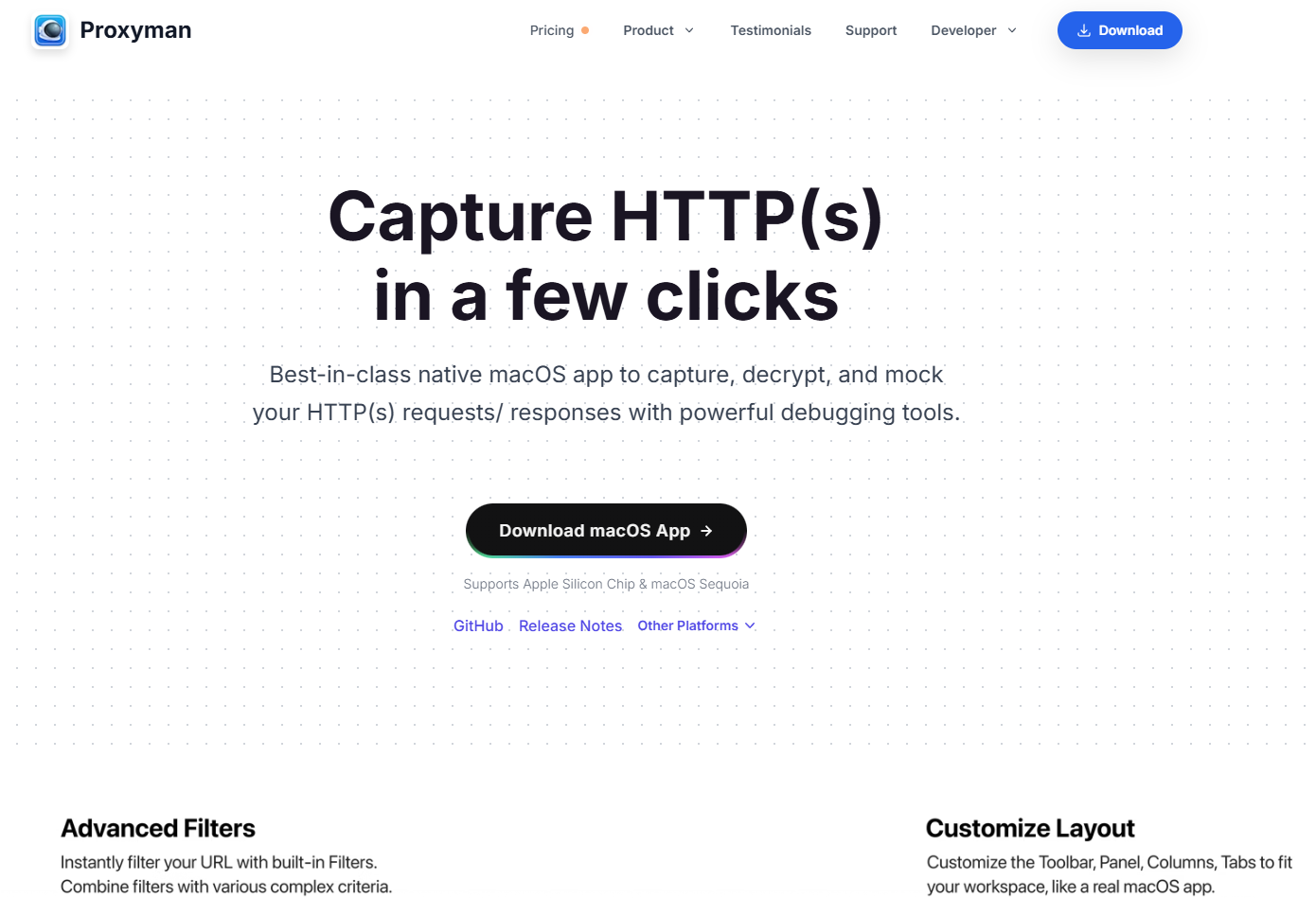
Best for: Debugging network requests, API issues, and security concerns.
These aren't automation tools, but they are absolutely essential for any mobile developer or tester. Charles Proxy (and its modern Mac-friendly alternative, Proxyman) is an HTTP proxy that lets you view all the network traffic between your mobile device and the internet.
How it works: You configure your phone to use your computer as a proxy. All network requests from the phone are routed through Charles, which logs them in detail. You can see the request, response, headers, and timing.
Why it's crucial:
- Debug API Calls: See exactly what your app is sending and receiving.
- Mock Responses: You can map a specific API endpoint to return a local file, allowing you to test how your app handles different responses (errors, empty states, etc.).
- Performance Analysis: Identify slow API calls.
- Security Testing: Check for unencrypted traffic.
Verdict: An indispensable tool for debugging the network layer of any mobile application.
Challenges in Mobile App Testing
Of course, testing mobile apps isn’t always straightforward. Common challenges include:
- Device fragmentation → So many devices, OS versions, and screen sizes.
- Network variability → Apps must work on 5G, WiFi, and even poor 3G.
- Third-party dependencies → APIs, SDKs, and integrations can break unexpectedly.
- User expectations → Fast, flawless performance is non-negotiable.
That’s why picking the right tools is crucial.
Best Practices for Mobile Testing
To make the most out of your mobile testing efforts, follow these best practices:
- Test on real devices, not just emulators.
- Automate wherever possible, but balance with manual exploratory testing.
- Prioritize API testing alongside UI testing.
- Continuously monitor performance post-deployment.
- Integrate testing into your CI/CD pipelines.
Crafting Your Mobile Testing Strategy
So, which tool should you use? The answer is: probably a combination.
- For a Cross-Platform Team: Start with Appium or Maestro for UI automation and use BrowserStack for device coverage.
- For a Native Android Team: Use Espresso for core UI tests and Firebase Test Lab for cloud execution.
- For a Native iOS Team: Use XCUITest for core UI tests and BrowserStack for device coverage.
- For Everyone: Always use an API testing tool like Apidog to test your backend independently. Use Charles Proxy to debug network issues. This "full-stack" testing approach is the key to high-quality mobile development.
Conclusion: Test Smarter, Not Harder
There you have it! The top 10 mobile testing tools in 2025, each tailored to different needs, whether it’s cross-platform automation with Appium, or easy cloud device access with BrowserStack. Mobile testing isn’t optional it’s essential. And with so many great tools available, there’s no excuse for shipping buggy apps. The goal isn't to use every tool on this list. The goal is to build a testing strategy that catches bugs efficiently, gives your team confidence, and delivers a fantastic experience to your users.
The bottom line? Start by solidifying your API tests with Apidog, then choose a UI automation framework that fits your tech stack. Finally, complement it with real device testing in the cloud. By investing in the right tools, you transform testing from a painful bottleneck into a powerful catalyst for quality and speed. Whether you’re an indie developer or part of a large QA team, investing time in the right mobile testing tools helps deliver fast, bug-free apps that users love.
Now go forth and release that app with confidence.



